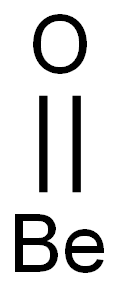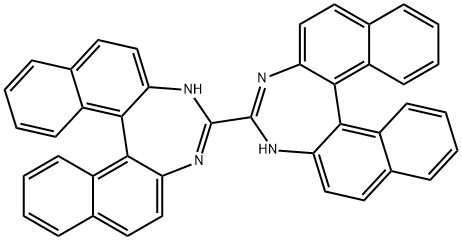PRODUCT Properties
| Melting point: | 545 °C |
||||||||||||||
| Boiling point: | 1169°C (estimate) |
||||||||||||||
| Density | 1,986 g/cm3 |
||||||||||||||
| solubility | very soluble in H2O; slightly soluble in ethanol |
||||||||||||||
| form | Powder |
||||||||||||||
| color | White |
||||||||||||||
| Water Solubility | very soluble H2O [MER06]; slightly soluble alcohol [HAW93] |
||||||||||||||
| crystal system | Six sides |
||||||||||||||
| Space group | P6222 |
||||||||||||||
| Lattice constant |
|
||||||||||||||
| InChI | InChI=1S/Be.2FH/h;2*1H/q+2;;/p-2 |
||||||||||||||
| InChIKey | JZKFIPKXQBZXMW-UHFFFAOYSA-L |
||||||||||||||
| SMILES | [Be](F)F |
||||||||||||||
| EPA Substance Registry System | Beryllium difluoride (7787-49-7) |
Description and Uses
Beryllium fluoride has the formula, BeF2, and is a hygroscopic, amorphous solid with a melting point of 800°C. It is soluble in water and is used in beryllium metallurgy in which the metal, Be, is employed as an alloy. Solid crystalline BeF2 has a silica-like structure with beryllium in a four-coordinate position.
Beryllium fluoride is used in biochemistry, particularly protein crystallography, since it binds in some of the same ways as phosphate does in human tissues. ADP and beryllium fluoride together tend to bind to ATP sites and inhibit protein action, making it possible to crystallize proteins in the bound state. Beryllium fluoride forms a basic constituent of the preferred fluoride salt mixture used in liquid-fluoride nuclear reactors. Typically, beryllium fluoride is mixed with LiF to form a base solvent, into which fluorides of uranium and thorium are introduced. Beryllium fluoride is exceptionally chemically stable and LiF/BeF2 mixtures have low melting points and the best neutronic properties of any of the fluoride salt combinations appropriate for reactor use.
Safety
| Symbol(GHS) |     GHS08,GHS09,GHS05,GHS06 |
| Signal word | Danger |
| Hazard statements | H350-H330-H311-H411-H301-H314-H372 |
| Precautionary statements | P280-P302+P352-P312-P322-P361-P363-P405-P501-P264-P270-P301+P310-P321-P330-P405-P501-P260-P264-P280-P301+P330+P331-P303+P361+P353-P363-P304+P340-P310-P321-P305+P351+P338-P405-P501-P260-P264-P270-P314-P501-P260-P271-P284-P304+P340-P310-P320-P403+P233-P405-P501 |
| Hazard Codes | N-T+,Xi |
| Risk Statements | 51/53-49-48/23-43-36/37/38-26-25 |
| Safety Statements | 61-53-45 |
| RIDADR | UN1566 |
| Hazard Note | Irritant |
| HazardClass | 6.1 |
| PackingGroup | II |
| Hazardous Substances Data | 7787-49-7(Hazardous Substances Data) |
| Toxicity | LD50 orl-rat: 98 mg/kg XEURAQ UR-154,1951 |





